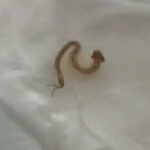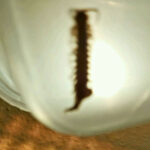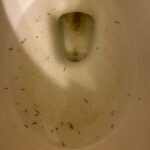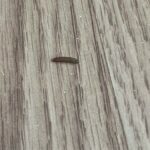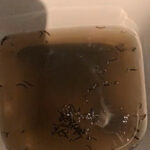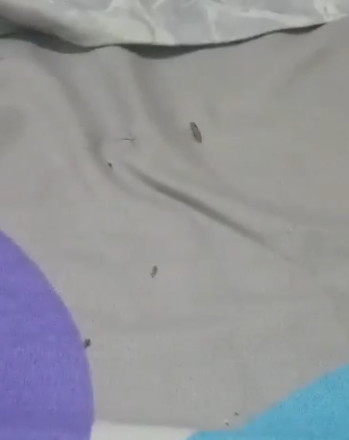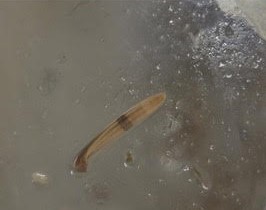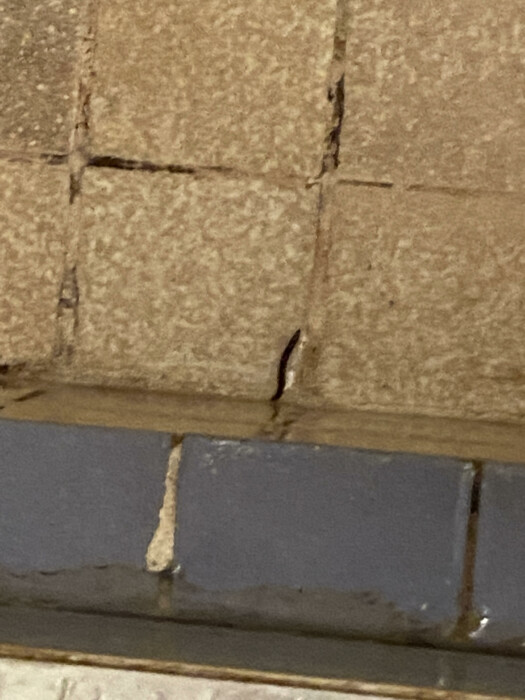
“I found a long, small, black worm while I was showering”, writes Kylee about the creature pictured below. “It’s the only one I’ve found, and it was so fast! But it doesn’t look at all like an earthworm. I’ll try to attach a photo.” This is a curious case, because once we think we land on an identification, one of the facts that Kylee gives us seems to put us back in a corner and reevaluate. For example, given where this creature was found, as well as its body shape and coloration, we would instinctively identify this as a drain fly larva. Yet, when we take into account that it supposedly moves “so fast”, then this explanation seems less likely. But in any case, from the picture it looks like the critter does not have legs, like most species of worms, and many species of insect larvae, and if this is the case, then how can it move as fast as Kylee suggests?
It would have been insightful to receive a video from Kylee, or maybe just a description of how it moves, because then we could determine if the worm does have legs we just cannot see from the picture, or if it is moving fast some other way. On top of that, Kylee doesn’t specify if the worm moves fast before or after the water was running in the shower. It could be that it seemingly moved fast when the water was running, but in reality it was just getting flung about by the water, or that is an aquatic worm that swam fast, but doesn’t move fast on solid ground.
In any case, if we assume that this creature has legs that are not visible on the picture, then we would conclude that this could either be a millipede, centipede, or silverfish. Out of the three options, the shape of the creature’s body aligns best with that of a millipede, though they are not particularly fast creatures compared to centipedes and silverfish, which are really fast. None of these creatures are harmful, so Kylee doesn’t need to worry about her health and safety. We recommend that she just scoop this worm onto a dustpan and move it outside. Since she only found one, we would assume this critter just came in accidentally, and not that an infestation is going on.
To conclude, we are not entirely sure what the worm is that Kylee found. If it were not for the fact that Kylee said it moved fast, we would identify this as a drain fly larva. Assuming it has legs, we would say it could be a centipede or silverfish, though we are not convinced of these identifications, as the critter Kylee found does not visually match any of those two creatures. In any case, we hope Kylee has found some part of this helpful, and we wish her the best!
All About Worms is always free, always reader-supported. Your tips via CashApp, Venmo, or Paypal are appreciated! Receipts will come from ISIPP Publishing.
You might also find these guys interesting!





